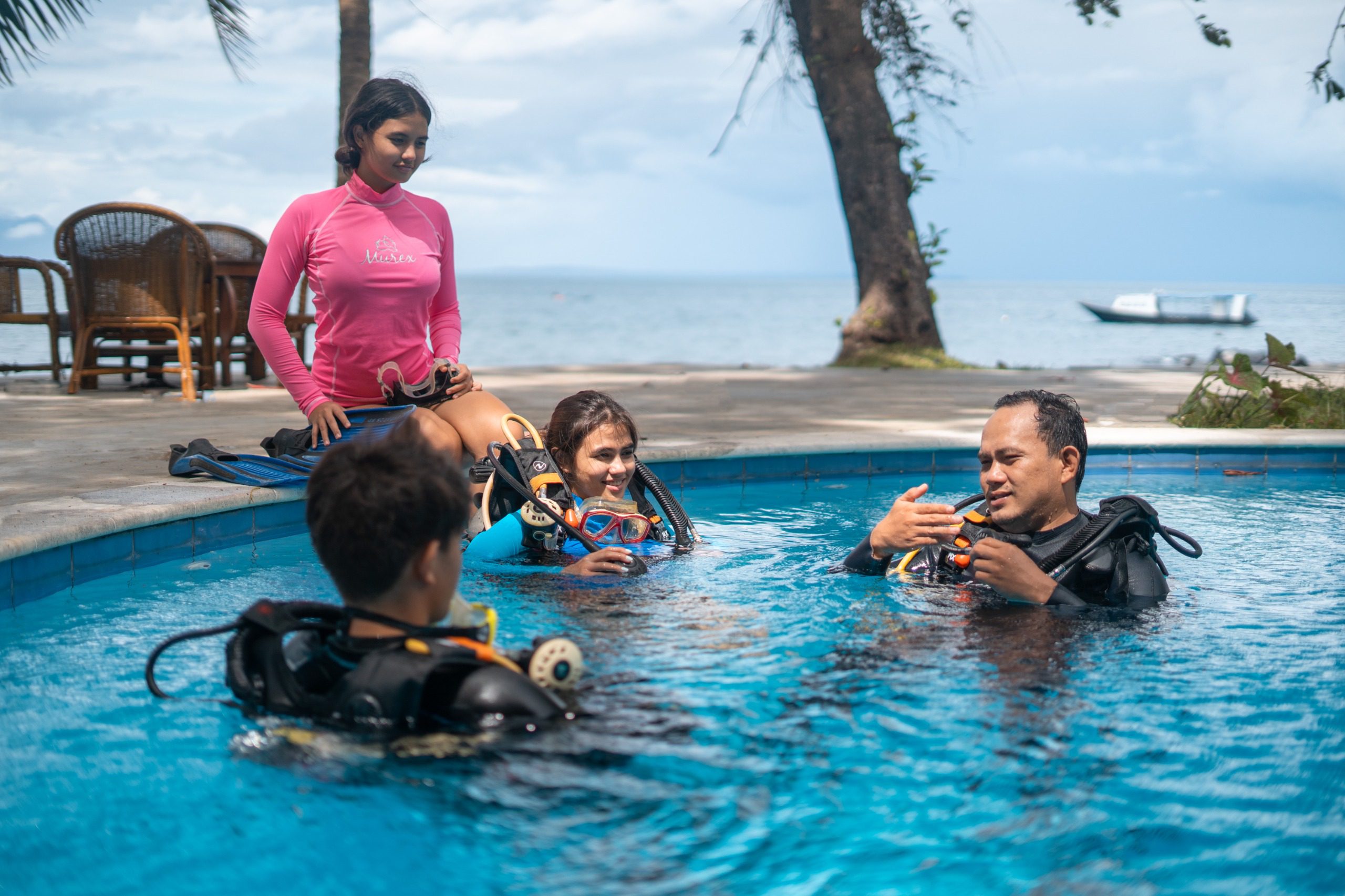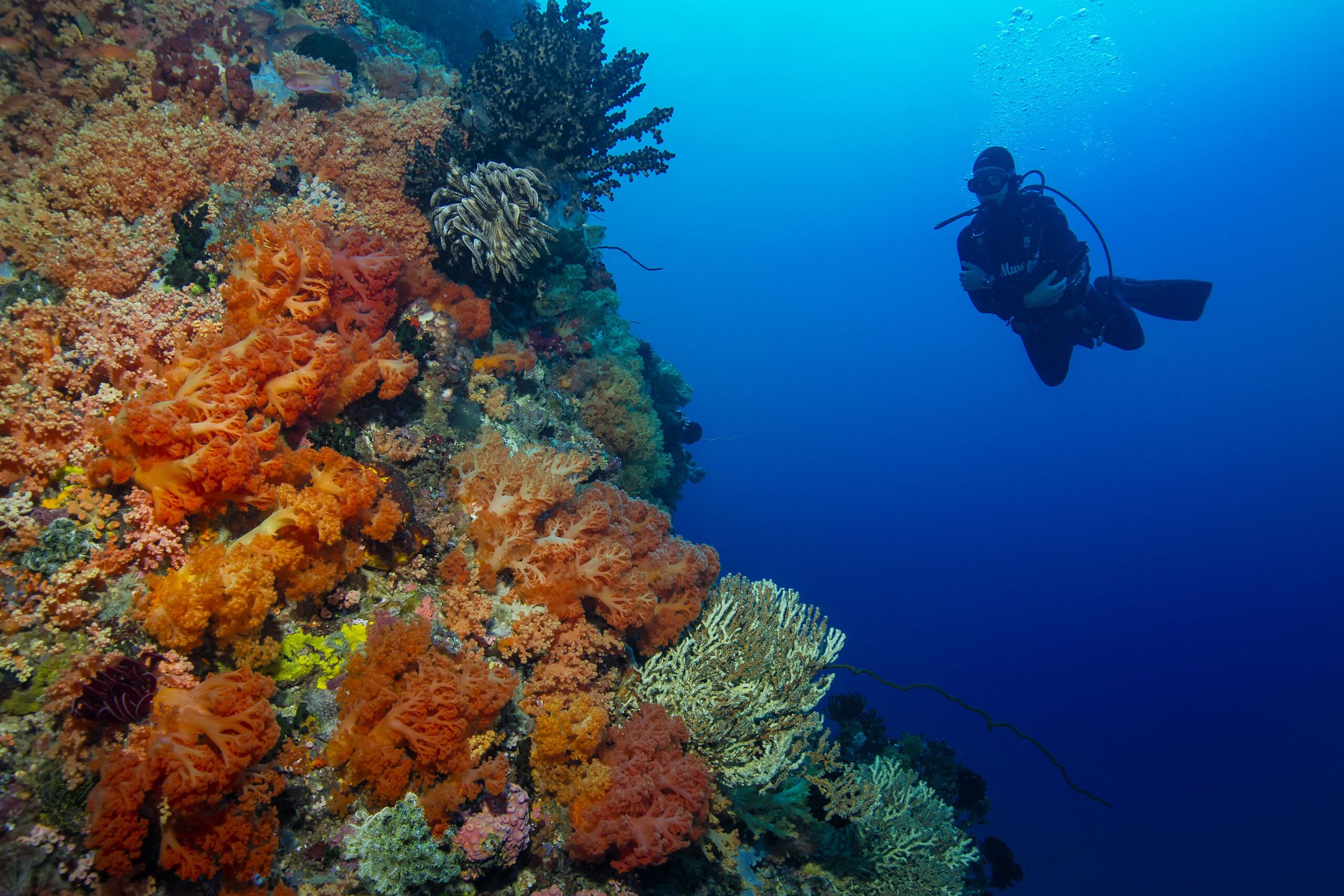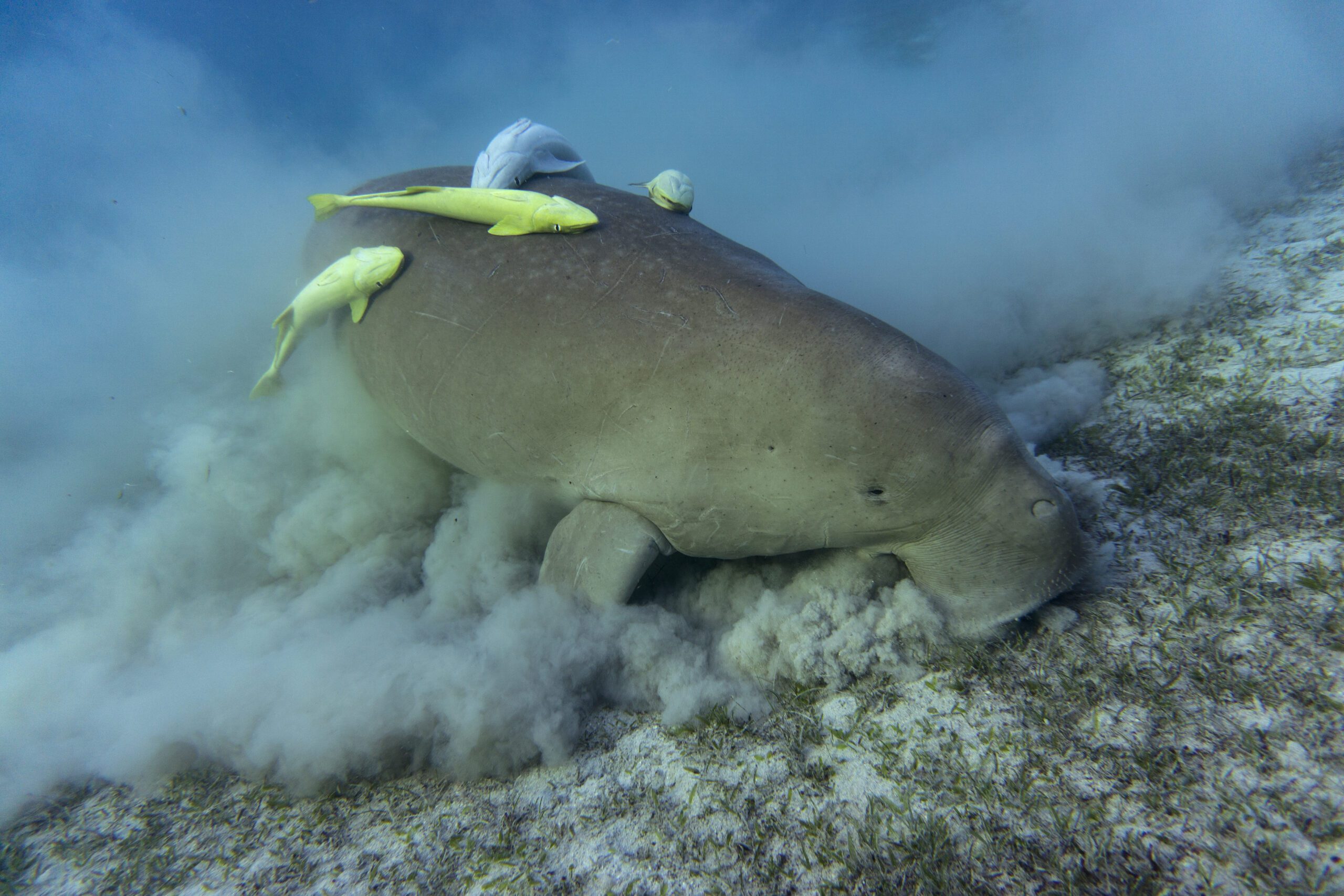
Things You Never Knew: 8 Facts about Dugongs
Dugongs feature highly on many divers’ bucket lists and are a marine mammal many of us want to see. We are extremely fortunate to spot them here in North Sulawesi but did you know that they are behind the myths of mermaids? Or that despite being known as “sea cows” they are more closely related to elephants? Did you know that dugongs “talk” to each other? Read on to find out more intriguing facts about these amazing creatures….
Interesting Facts About Dugongs
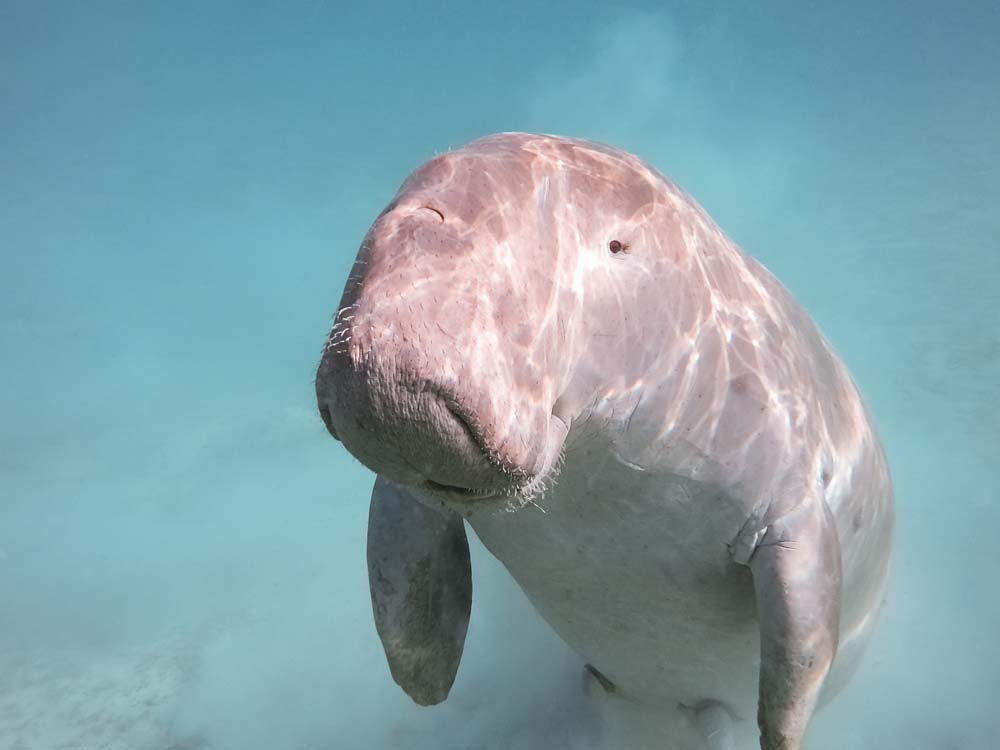
Did you know that dugongs “talk” to each other?
1. Dugong Species
There are 4 species in the dugong family, 3 out of the 4 are manatees and only 1 is dugong: “Dugong dungon”, which is the species we have here in North Sulawesi. The only other true species of dugong (Hydrodamalis gigas) was hunted to extinction in 1767, just 36 years after its discovery. They were similar in appearance to Dugong dugon but substantially bigger with a body length of a massive 7 – 10 meters and weighing in at between 4,500 – 5,900 kilograms!
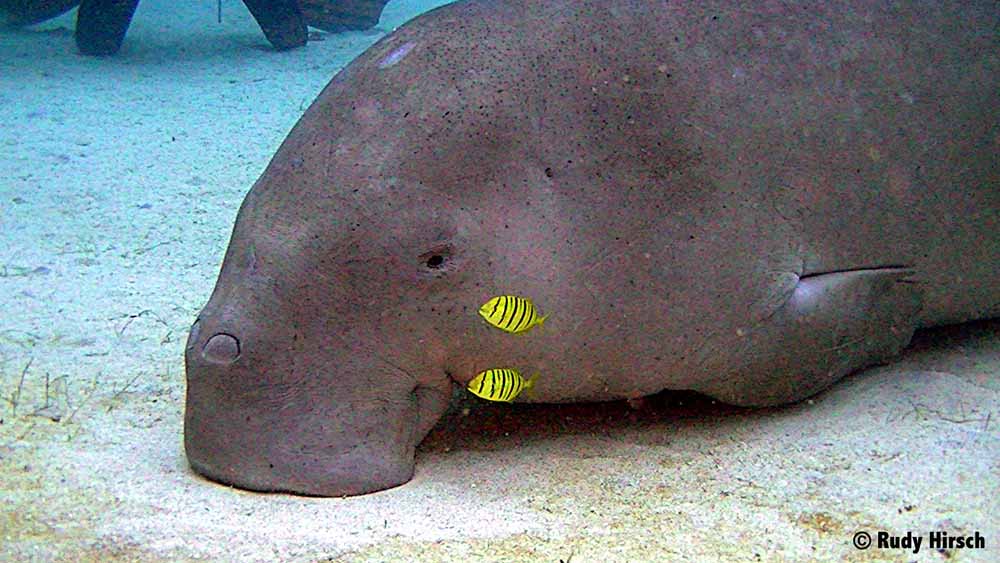
A feeding Dugong observed by our guests at Bangka Island
2. Appearance
Dugongs are often referred to as “sea cows” due to their heavy, solid looking bodies. They are a greyish brown color and range in length from 2.4 meters up to 4 meters and adults weigh from between 230 – 400 kilograms. They have short, paddle-like front flipper fins and a straight tail, which they use for propulsion through the water.
The tail is the feature which distinguishes them from manatees, which have a paddle shaped tail, whereas the dugongs is similar to that of a whale. Dugong’s ears are barely visible but they are thought to be extremely sensitive and compensate for their poor eyesight. Dugongs have tusks but they are only visible in mature males and extremely old females – did you know that the dugong is actually related to the elephant?!
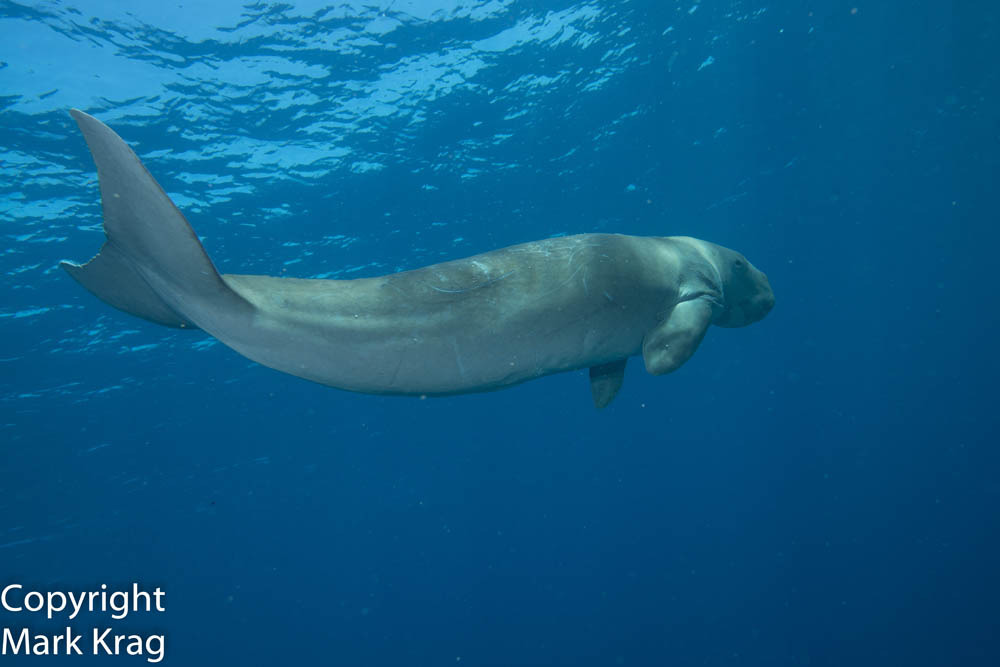
Dugongs have short, paddle-like front flipper fins and a straight tail, which they use for propulsion through the water.
3. Behavior
Dugongs are a social species and found in groups which can vary in size from just 2 to 200 individuals. Pairs of dugongs found together are often mother and calf pairs. Large groups don’t stay together for long as there is rarely enough sea grass to support a big group over a long time scale. Dugongs are semi-nomadic; some will migrate long distances while others will reside around the same area for life. Their travelling is driven entirely by the availability of food.
Dugongs are ordinarily a very shy species and will allow themselves to be observed from a distance but move away if disturbed. When approached patiently and cautiously they have been shown to be quite inquisitive. We have been lucky enough to have some very close encounters here at our dive sites. Did you know that dugongs communicate with each other? Similar to dolphins they use chirps, whistles, barks and other sounds that echo underwater!
4. Feeding
Dugongs are the only completely herbivorous marine mammal on the planet and their diet consists entirely of sea grass. They use their upper lips to uproot the entire sea grass plant rather than eating only the leaves – this leads to dugong “trails” which are like sandy pathways through sea grass beds. They have very slow metabolic rates and when sea grass is scarce they will also eat algae.

This leads to dugong “trails” which are like sandy pathways through sea grass beds.
5. Mating and Reproduction
Unlike many other marine species, dugong mating is not seasonal and occurs year round. Male dugongs will form a mating train and follow one female attempting to mate with her – this is known as the “following phase” which is followed by the “fighting phase”. Fighting can occur between the males or between one of the males and the female and includes splashing, tail thrashing, rolls and body lunges. The final stage is the “mounting stage”, which is when the “deed” is done.
Male dugongs mount females from underneath while the other males continue to fight for the same position, meaning a female may be mounted several times by competing males – this almost always guarantees conception. Female dugongs do not reach sexual maturity until they are 6 years old, only produce one calf every 2.5 – 7 years and have a long gestation period of 13 – 14 months!
6. Life Cycle and Span
Dugong calves nurse (suckle) for 18 months or longer and during this time they rarely stray from their mother – they are often seen riding on the mother’s back! The calves suckle from their mothers’ mammary glands which are hidden away under her fins. They continue to remain close to their mother until between 6 and 9 years of age, at which point they will leave their mother to seek out a mate of their own. Dugongs in the wild live up to 70 years or more and their age can be estimated by counting the growth layers that make up their tusks.
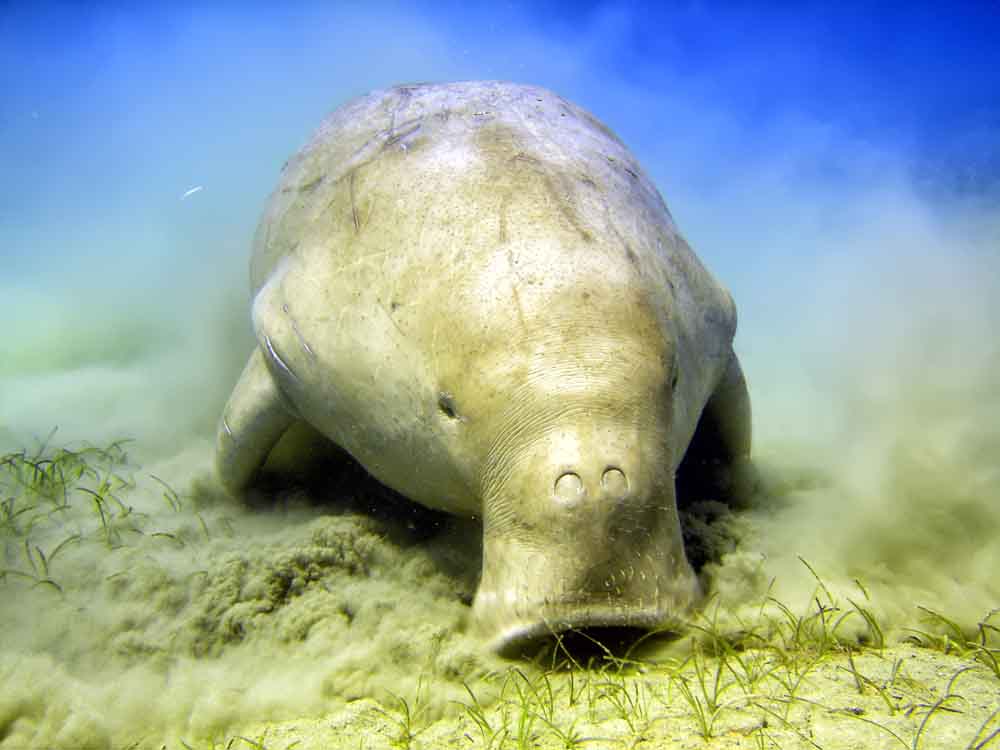
A Dugong while digging sand for food
7. Conservation Status
Dugongs are sadly listed as vulnerable on the IUCN Red List, endangered on the US Federal List and are also listed on Appendix 1 of CITIES (Convention on International Trade In Endangered Species). Dugongs’ threatened status is largely due to human activities; if they are caught in fishing nets and cannot surface for air they will drown – they can only hold their breath for up to 12 minutes.
Sea grass is often in shallow water and they spend most of their time at around 10 meters or less so they are susceptible to boat and propeller strikes, they also suffer from lack of food in areas where pollution is an issue and in some parts of the world they are hunted. These threats combined with a low and slow reproduction rate means they need protecting.
8. North Sulawesi Dugongs
We are extremely lucky to have these wonderful marine mammals here in North Sulawesi and to see them at our dive sites. The majority of sightings tend to be around Bunaken and Bangka Island where there are sea grass patches for them to feed on. Peter’s Sponge dive site at Bangka has been an excellent spot for sightings and for observing some interesting behavior as a submerged tree log has become a scratching post for them! The best time for sightings is around sunrise and sunset but as they are such a shy species sightings are not guaranteed and are a special occasion.
Recent research has shown that the area around Bangka is considered a corridor for dugong migration from Indonesia to the Philippines – watch this space for more info as research continues. If you have any images of dugongs that you have seen here in North Sulawesi we would love for you to forward them to us, along with the dive site name and date so we can send them on to the Dugong and Sea Grass Conservation Project.
Ready to join us in North Sulawesi and dive into the world of dugongs? Enhance your experience by booking a combination package with Murex Manado and Murex Bangka. Dive into the diverse marine life and maximize your chances of an encounter. With seamless boat diving transfers between resorts, you won’t miss a day of diving, and you’ll have the opportunity to explore remote and pristine dive sites.
For those looking to include Lembeh in their journey, explore our Passport to Paradise package. Immerse yourself in three distinct dive destinations in a single trip, featuring epic walls, vibrant reefs, and unparalleled muck diving.
To learn more or make a booking, reach out to us at reservations@murexresorts.com. We’re here to assist you in creating an extraordinary adventure. Find out about Murex rates and explore the options of our Passport to Paradise package by visiting our website.
Ready to make memories? Secure your spot now and get ready for an incredible diving experience with us.


